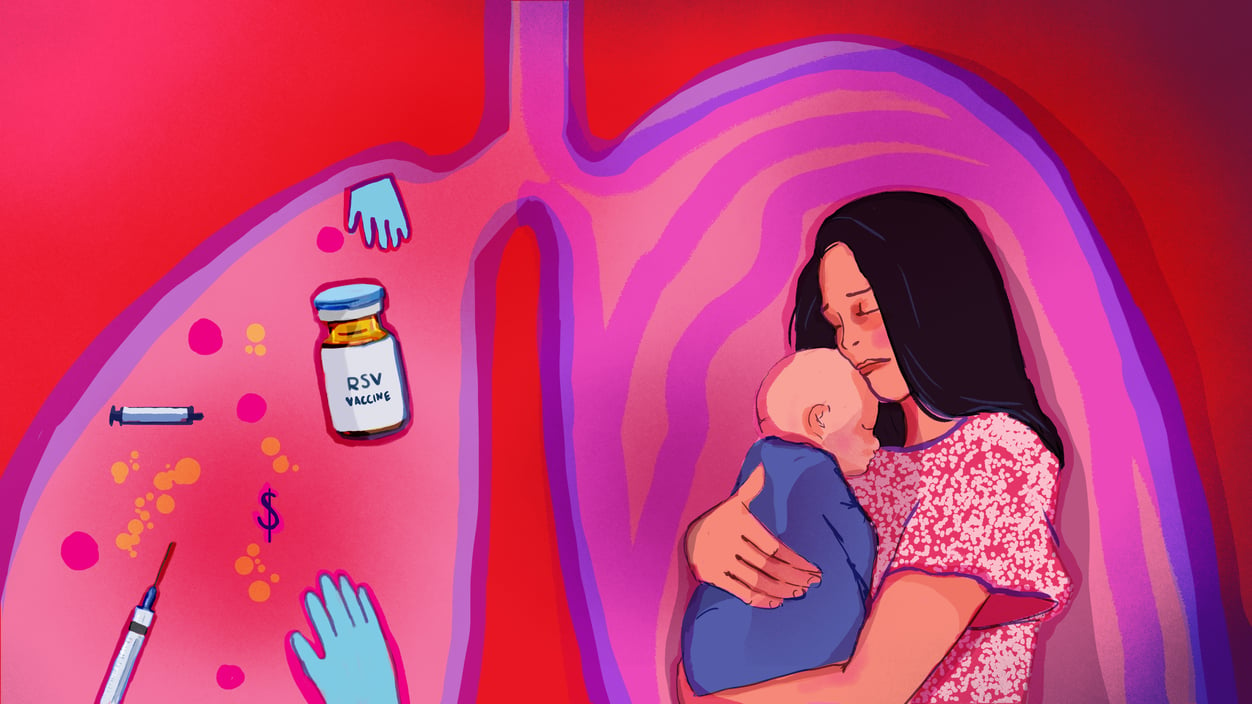Closer Look
Protecting babies against RSV sounds like a miracle, but hurdles stand in the way
 Maria Fabrizio for STAT
Maria Fabrizio for STAT
RSV can be a nightmare for infants, their parents, and hospitals. The respiratory infections are ubiquitous, but most damaging and sometimes deadly to the very young and the very old, who can't shrug their illnesses off as nasty colds. After years of research, vaccines and monoclonal antibody treatments are finally nearing the finish line of FDA approval, including a vaccine administered during pregnancy that protects babies in the first few months of life and an antibody injection to shield them in their first year.
But hurdles stand in the way of bringing the promise of these products to patients. The barriers aren't posed by the virus but by bureaucracy, health systems that don't interact with one another, and steep costs. And then there's the challenge of overcoming vaccine hesitancy in pregnancy. STAT's Helen Branswell explains.
public health
Autopsy rates continue their downward trend
 National Center for Health Statistics, National Vital Statistics System, Mortality
National Center for Health Statistics, National Vital Statistics System, Mortality
True confession: I am a faithful reader of obituaries (and recommend "The Dead Beat," an homage to obit writers). I'm fascinated by portraits of lives lived — and what ended them. Which may explain why this report on falling and changing autopsy rates caught my eye. For its analysis, the National Center for Health Statistics followed rates from 1972 through 1994 and from 2003 through 2020, blaming budgetary restrictions for the gap and changes in hospital accreditation standards for the overall decline.
By 2020 — the first Covid year — autopsies hit a low of 7.4% of deaths. In the more recent period, rates were highest for people age 15 to 24 and for causes such as homicide (98.7%). There were other differences: In 1972, 79% of autopsies were performed for deaths due to diseases and 19% for external causes such as assault. By 2020, 37% of autopsies were performed for diseases and 60% for external causes.
mental health
Opinion: Maybe we're talking about teens' mental health too much, not too little
Enough with the awareness campaigns, already? It's a serious question, asking if weeks and months devoted to mental health are permeating young people's consciousness to a harmful degree. The campaigns' motivation is noble, grounded in the idea that people must identify mental health problems before treatment can be effective. But does it work? Maybe not, psychologist Lucy Foulkes writes in a STAT First Opinion. She cites a British study showing that while campaigns improved attitudes toward people with mental illness and encouraged them to seek help, it's not clear they got what they needed, thanks to long wait lists.
Foulkes offers a provocative interpretation: "Some of these people are seriously unwell and badly need help," she writes. But "I think the current conversation about mental health might be encouraging people to interpret their difficulties as mental health problems when they're not, in a way that's actively unhelpful for the individual." Read more.
If you or someone you know may be considering suicide, contact the 988 Suicide & Crisis Lifeline: call or text 988 or chat 988lifeline.org. For TTY users: Use your preferred relay service or dial 711 then 988.
This week on the "First Opinion Podcast," First Opinion editor Torie Bosch talks with Sanjay Basu about "screen and refer" systems and how to bring a bit more humanity back to health care. Listen here.


No comments